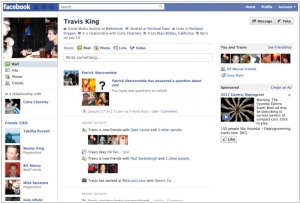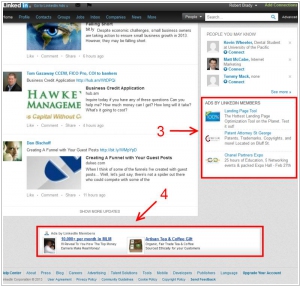Facebook Ads vs LinkedIn Ads
November 03, 2023 | Author: Sandeep Sharma
Facebook Ads and LinkedIn Ads are both popular advertising platforms, but they have distinct differences in terms of their audience, targeting options, and ad formats. Facebook Ads provides access to a vast user base, making it suitable for reaching a wide range of audiences. It offers advanced targeting options based on demographics, interests, behaviors, and connections, allowing businesses to reach their ideal customers. Facebook Ads also supports various ad formats, including image ads, video ads, carousel ads, and more. LinkedIn Ads, on the other hand, focuses on professionals and business-oriented audiences. It allows businesses to target users based on their industry, job title, company, and professional interests. LinkedIn Ads are particularly effective for B2B marketing and recruitment campaigns.
See also: Top 10 Online advertising services
See also: Top 10 Online advertising services
Facebook Ads vs LinkedIn Ads in our news:
2023. Meta debuts generative AI features for advertisers
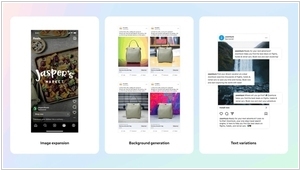
Meta is introducing its initial generative AI capabilities designed for advertisers. These features empower advertisers to employ AI for tasks such as crafting backgrounds, enlarging images, and generating multiple versions of ad text derived from their original content. These new offerings exemplify Meta's belief in the potential of generative AI to aid the brands and enterprises that contribute significantly to Meta's revenue stream. The first feature in this trio enables advertisers to personalize their creative assets by producing diverse backgrounds, transforming the appearance of their product images. This functionality is akin to Meta's consumer-oriented tool, Backdrop, which permits users to modify their image's setting or background through prompts. Another feature, image expansion, enables advertisers to adapt their assets to various aspect ratios needed for different products, such as Feed or Reels. Moreover, within Meta Ads Manager, the text variations feature utilizes AI to generate up to six distinct text versions based on the advertiser's original content.
2020. LinkedIn introduces new retargeting tools
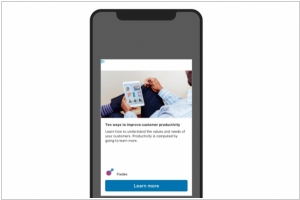
LinkedIn has introduced several exciting features for advertisers, including retargeting capabilities associated with video ads and lead-generation forms, along with brand safety integrations for the LinkedIn Audience Network. With the new retargeting functionality, advertisers can create and tailor ads to reach users who have viewed different percentages (25, 50, 75, or 100%) of their video ads. Moreover, they can target ads towards users who have interacted with Lead Gen Forms by either opening or submitting them. These enhancements provide advertisers with more precise targeting options and enable them to effectively engage with their desired audience on LinkedIn.
2016. Facebook tests ads in Groups
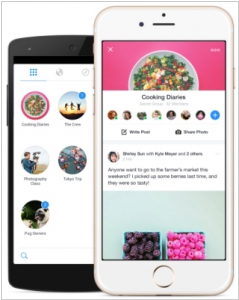
Facebook is set to introduce advertisements to its Groups feature, reaching its 1 billion user base. These ads will adopt the same appearance as News Feed ads and will be targeted based on both Group topics and standard identity-based targeting. The diverse range of purposes that Groups serve can significantly enhance the value of these ads. By effectively categorizing Groups and refining ad targeting, Facebook can deliver highly relevant and profitable ads to individuals with varied interests. For instance, if someone has indicated their affinity for the Manchester United football team by liking their Page, it suggests a likelihood of their interest in purchasing sports merchandise. This capability to target specific interest groups opens up opportunities for advertisers to reach their intended audience with precision and increase the effectiveness of their campaigns.
2016. LinkedIn Ads allows advertisers to use their own data for targeting
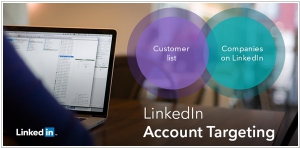
Advertisers on LinkedIn can now employ a new method to tailor their campaigns and focus on companies where they aim to generate sales. The introduction of LinkedIn Account Targeting allows businesses to provide their own list of sales accounts, which primarily consists of company profiles rather than individual user accounts. LinkedIn then cross-references this list with its extensive database of 8 million company pages on the platform. Subsequently, a user segment is created for precise ad targeting. Marketers have the flexibility to combine this feature with LinkedIn's existing targeting capabilities, enabling them to refine their campaigns by specific job titles in particular geographical locations, specifically targeting a select few thousand companies.
2015. Facebook partners with IBM to make ads targeting easier for big brands
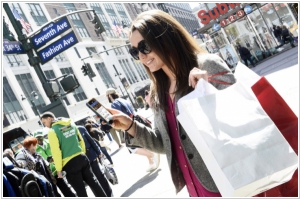
Facebook and IBM have jointly announced a collaboration that brings together their advertising tools and experts to assist large companies in tailoring their marketing strategies for customers. This partnership aims to enhance the relevance of ads presented to individuals. For instance, advertisers can leverage IBM's data to identify specific customer segments for targeted marketing campaigns through email and Facebook. Alternatively, a sports brand could collaborate with IBM and Facebook to deliver real-time Facebook ads to customers attending a game, leveraging IBM's location data. This collaboration enables both Facebook and IBM to strengthen their relationships with major advertisers. Additionally, it serves as an incentive for IBM's Fortune 500 clients to engage more closely with Facebook, which seeks to expand its advertising revenue. Simultaneously, IBM gains access to the vast amount of consumer data collected by Facebook, offering valuable insights for their marketing endeavors.
2015. LinkedIn expands its marketing platform with off-site ads
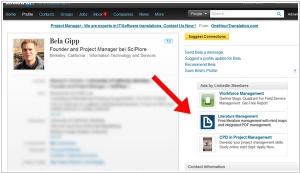
LinkedIn is introducing an enhanced version of its LinkedIn Ads platform, which now comprises five key components: LinkedIn Lead Accelerator, Sponsored Updates, LinkedIn Onsite Display, LinkedIn Network Display, and Sponsored InMail. The flagship feature, Lead Accelerator, enables businesses to segment their audiences and deliver targeted ads and content in a customized sequence for each group. Additionally, the new Display Network empowers advertisers to run campaigns on both LinkedIn and 2,500 publisher sites across the web. With these additions, LinkedIn now provides a comprehensive solution that caters to the entire sales funnel. It begins by attracting customers with On Site Display and Network Display ads, moves them through the funnel with Sponsored Updates and Sponsored InMail, and assists in the final stages of customer acquisition through the Lead Accelerator functionality.
2015. Facebook launched automated Product Ads
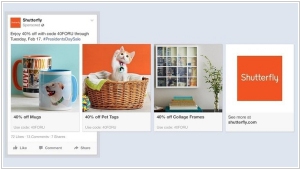
Facebook has introduced a new option called Product Ads, which comprises a suite of tools designed to enhance businesses' targeting capabilities on its platform, reaching its vast user base of approximately 1.4 billion individuals through an automated process. With Product Ads, businesses can upload their product catalogs to Facebook and either manually create ad campaigns or allow Facebook to automatically generate campaigns that target specific user segments. Facebook's automated approach leverages factors such as user interests, general location, and previous interactions with the advertiser's app or website to optimize ad performance. This feature is particularly advantageous for businesses with extensive inventories of appealing products, such as furniture chains or clothing franchises, as it increases the likelihood of users discovering and purchasing items.
2014. Facebook launches hyper-local ads
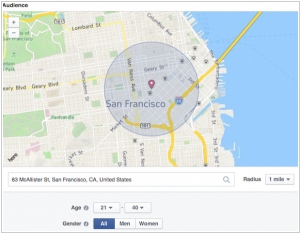
Facebook Ads has introduced a new hyper-local targeting feature aimed at enticing people to visit nearby stores and businesses. This update enables brick-and-mortar establishments to specifically target their ads towards individuals who either reside in or have recently been in close proximity to their stores. Advertisers have the flexibility to set a radius as small as a mile, and the ads will be displayed on users' mobile phones or web browsers. These Local Awareness ads will initially be available to business owners in the United States within the next few weeks, followed by a global rollout over the next several months. With over 1 billion mobile users on Facebook, a significant number of whom provide location access, along with desktop users who willingly share their current city or can be identified through IP addresses, the platform possesses extensive reach. Moreover, the recent introduction of the ambient proximity feature called Nearby Friends allows Facebook to access real-time location data from some users in the United States.
2014. Facebook takes on Google AdWords with Atlas
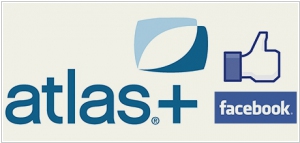
Facebook has recently launched a new advertising platform called Atlas that aims to target users on any website by utilizing their Facebook information. Atlas was acquired by Facebook from Microsoft last year. The platform is designed to rival Google's AdWords, enabling advertisers to display ads that track users across the web and mobile devices. Advertisers have the option to purchase ads on external websites and apps, with the choice of incorporating the Facebook social network. Instead of relying on cookies, Facebook will utilize the user's Facebook login details. While this move may not be well-received by Facebook users, it provides an alternative for advertisers and serves as competition to Google AdWords.
2014. LinkedIn acquires B2B marketing service Bizo to power its Ads
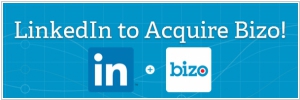
LinkedIn has announced its acquisition of Bizo, a service that specializes in assisting advertisers in reaching businesses and professionals. Bizo provides targeting and analytics capabilities for display and direct response advertisements. The acquisition deal is valued at approximately $175 million. In a blog post discussing the acquisition, David Thacker, a representative from LinkedIn, highlighted the increasing popularity of business-to-business advertising on the platform, particularly through its Sponsored Updates ad unit. LinkedIn's Marketing Solutions division generated $101.8 million in revenue during the first quarter of 2014, marking a significant 36 percent year-over-year growth. By incorporating Bizo's technology, LinkedIn aims to enhance its advertising offerings and provide an improved experience to its users.

